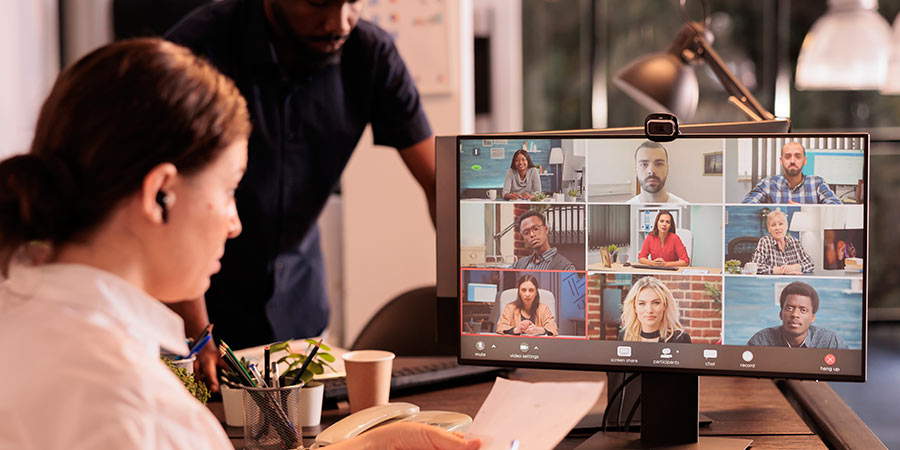
The AEC industry is standing at a point where most of the U.S.-based architectural businesses are increasingly embracing remote teams. So, what is fostering these firms to exploit remote teams in 2025?
From a strict strategic perspective, the advantages go way beyond mere Zoom calls or hybrid work modes. Contemporary AEC workflows reveal that project complexity, labor shortages, and a desire for growth motivate firms to search for borderless talent. In fact, with adaptable project resourcing, access to worldwide talent, and 24/7 design advancement, remote teams currently fuel the innovative and resilient AEC businesses.
This makes it clear that working with remote teams is the foundation of future best practices and not just a passing trend. Through this blog, we will explore how architectural companies in the U.S. are leveraging remote collaboration to deliver large-scale projects, diminish costs, and boost client experience without compromising compliance and quality.
Remote Work in Architecture Is the New Normal
There was a time when remote support was perceived as a temporary necessity. However, in 2025, it is more of a defining feature of successful architectural businesses. In a recent AIA survey, it was found that most U.S. firms have adopted either a hybrid or a remote-first approach. Leaders in this field are emphasizing their reliance on remote teams, as they have experienced that these teams have helped establish resilience in an uncertain economy.
Modern cloud-based BIM tools, collaborative design platforms, and virtual walkthroughs are now bridging any geographic gaps. An AIA survey also confirms that over 70% of architectural professionals seek remote flexibility since it tends to ensure their optimal performance. So, collaborating with a remote team enables an architectural firm to be assured of better project success.
Consequently, architectural firms have steadily understood that this shift is beyond just convenience. Instead, it unlocks flexibility, assures business continuity, and brings huge cost efficiencies.
Reasons for Firms to Choose Remote Teams
The architectural industry is as dynamic as it gets. What it means is that this sector is among those that change and evolve constantly. New technologies are emerging, client expectations are changing, along with regulatory updates and innovative design approaches. All of these make the industry significantly dynamic.
The increasing adoption of remote architects and designs by AEC firms is due to multiple reasons. Ultimately, the purposes are to enhance agility, increase diverse expertise, and efficiently deal with fluctuating project workloads.
Scalability is perhaps the foremost reason for architectural firms to opt for remote teams. Teams can rapidly adjust to varying project requirements, scaling up or down when needed, without any hassle. The next big reason is access to specialized skills. Collaborating with remote teams allows firms to get their hands on experts for code compliance, BIM modeling, and visualization. As a result, overall project outcomes improve.
The time zone advantage should not be neglected. By partnering with a remote team, architectural firms ensure their projects are running around the clock. The result of this is speedier project delivery, with teams advancing while clients rest. In a versatile sector like AEC, diversity plays a vital role. Having remote teams as partners enables architectural firms to render a wide range of perspectives that empower creativity and innovation.
Business Influence
Diverse sources verify that more and more U.S.-based architecture firms are utilizing remote support models. These firms have also reported that they have experienced lower costs and better profits.
Reduced overhead is among the most critical benefits of utilizing remote teams for architectural businesses. There should be drastic savings on IT equipment, office space, and utilities. This saved capital can be used for talent and innovation. Higher profit margins can also be enjoyed by architecture firms as a result of working with remote teams. Flexible labor costs lead to increased profits even during sluggish periods.
Another advantage that remote teams bring to the table for architecture firms is faster hiring. Firms can fill dedicated positions much quicker without regional hiring delays. When an architectural firm starts using support from remote teams, it further opens the door to winning more bids and taking on bigger projects. This is simply because of the competitive pricing the firm can offer, which is a result of the lower costs.
An industry report unveils a staggering fact. Architectural firms using remote project support enjoy approximately a 25% reduction in project costs, which eventually boosts profit margins and competitive edge.
Real-Time Collaboration
The AEC industry is now positioned at a point where every single firm knows the worth of collaboration. It is now one of the most important driving factors behind a project’s success. However, remote teams have evolved beyond emails and video calls. They capitalize on leading technological tools for hassle-free, transparent collaboration.
- Cloud-based BIM facilitates simultaneous project workflows, irrespective of borders and time zones.
- 4D or 5D visualization improves stakeholders’ reviews of project stages and expenses.
- Virtual design reviews with the help of VR and AR keep clients well-engaged and informed with remote project teams.
It is also critical to mention that U.S. architectural businesses are now extensively deploying project management tools and cloud platforms. The aim here is to integrate remote and regional workflows without compromising productivity levels.
How Remote Teams Operate
Architectural companies based in the U.S. are now employing remote specialists for clearly specified architectural tasks. They have crucial roles in all design phases. Concerning schematic design, they quickly craft feasibility models and recommend innovative alternatives. At the time of design development, they construct and refine 3D models while integrating client and engineer feedback.
On the other hand, when it comes to producing construction documents, remote teams guarantee conformance to U.S. building codes and regional guidelines. Finally, proficient specialists also help deliver 3D renderings and animations, offering clients and other stakeholders vivid walkthroughs for planning approval or design buy-in.
As a whole, each phase utilizes transparent and digitized tracking, documentation, and milestone reporting to ensure project accountability.
Quality and Compliance
Sustaining high project standards is still the topmost priority for architectural businesses. Dependable remote support providers can address this challenge in different ways.
- Structured Communication: Teams utilize project dashboards and regular check-ins to ensure the alignment of all deliverables.
- Quality Assurance: Recurrent design reviews and third-party audits go alongside the specific standards.
- U.S. Code Proficiency: Remote experts document and review drawings for local compliance and permit preparedness.
- Specialized Support: Training and assigning resources help teams meet important deadlines, reach project goals, and address local requirements.
Solutions to Common Struggles in Remote Collaboration
Working with remote teams comes with real challenges, particularly for architecture and AEC organizations. However, an innovative team can address them by:
- Investing in Tech: Trustworthy cloud applications, safe data sharing, and comprehensive BIM platforms curtail risks and guarantee delivery.
- Culture and Training: Efficient onboarding, information sharing, and organized virtual meetings assist remote and in-house experts in working in the best collaborative way possible.
- Well-Defined KPIs and SLAs: Clear project metrics make sure that desired quality is maintained and teams are well-equipped to adapt to evolving requirements.
Essential Trends Affecting Architectural Remote Work
Undoubtedly, in 2025, U.S.-based architectural firms can benefit from several remote work and collaboration trends. It is now evident that hybrid and flexible staffing are permanent fixtures. This allows teams to scale in line with what clients want. Besides, architectural firms are now investing more in digital client experiences and stakeholder engagement. The outcome of this is loyal and satisfied clients.
Utilizing remote teams also aids architectural firms in strengthening their business continuity plans. It further assures firms of keeping projects moving forward during any market shifts, staff changes, or regional emergencies. This ultimately affirms U.S. architecture firms’ resilience in volatile times.
Final Views
Utilization of remote teams is something that is indeed shaping the future of the U.S. architectural landscape in 2025. The flexibility, expertise, and value that they bring give architectural businesses the edge in growing and changing markets. Besides, to lead digital transformation, modern firms require partners who are well-versed in remote architectural work.
This is precisely where Uppteam comes to the rescue for architectural firms in the U.S. We provide a diverse range of high-quality remote support services to architectural businesses. So, future-proof your architectural workflows by collaborating with Uppteam right now.

















